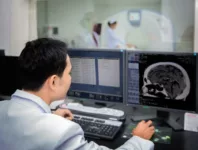From robot caregivers to fitness trackers, technology’s role in the health care field is rapidly advancing. What was once science fiction is now real life.
In one striking example, telecommunications company Qualcomm is motivating engineers and scientists with a $10 million prize to design a disease and health conditions diagnostics device, in its Tricorder XPRIZE contest. The device bears the same name as the one used in television program Star Trek and will have similar functionality.
Here are some of the ways technology is propelling health care advancements that can help save lives and improve quality of life for patients with diverse conditions.
Ingestible Health Care Tech
Swallowing pills is the most common way to take medication, but now, swallowing ingestible sensors can help regulate medicine intake and alert people to potential health issues. Budget Direct reports Proteus Digital Health has created ingestible sensors integrated with a mobile device, which record when medication is taken. The sensors are activated by stomach acid and can help identify patient health patterns, a form of tech consumption that delivers instant data monitoring.
Instant Access to Health Care via Apps
In 2015, Fortune magazine reported the telemedicine app Teladoc was groundbreaking in that it made its debut on public markets. Its membership grew from 1.9 million in 2013 to 8.1 million in 2014, with members signing up to get instant access to doctors. Via phone calls or video chats, doctors can assist in diagnosing and prescribing for medical conditions that can be treated remotely, such as pink eye, urinary tract infections, bronchitis and rash.
Professional services firm PwC’s Health Research Institute’s 2016 Top Health Industry Issues report shows mobile health app adoption doubled from 2013 to 2015, with 32 percent of consumers having at least one mobile health, medical or fitness app on their smartphones.
Medical Robots
A report released by Robotics Business Review shows the global medical robots market is expected to grow at a compound annual growth rate of 16.1 percent through 2018, with exoskeletons that increase the strength of the wearer and may mimic the human brain leading the pack in developments. Robots that perform surgery and assist in home health care are also part of the growth, including robots that are able to safely lift patients without causing them harm.
Living Organ Transplants
Organs immediately start deteriorating after they are removed from a body. Their shelf life is short and they require critical care to be useful as transplants. The University of Michigan Transplant Center reports the typical preservation time of a lung is less than five hours, and the maximum time it’s viable outside a body is fewer than 10 hours.
Companies like TransMedics have created products using warm donor organ perfusion system technology. This simulates human body conditions to keep organs in a “living” state before they are transplanted, which increases the probability of the transplant’s success.
Technology is helping people live longer and healthier lives through less invasive health care techniques.








